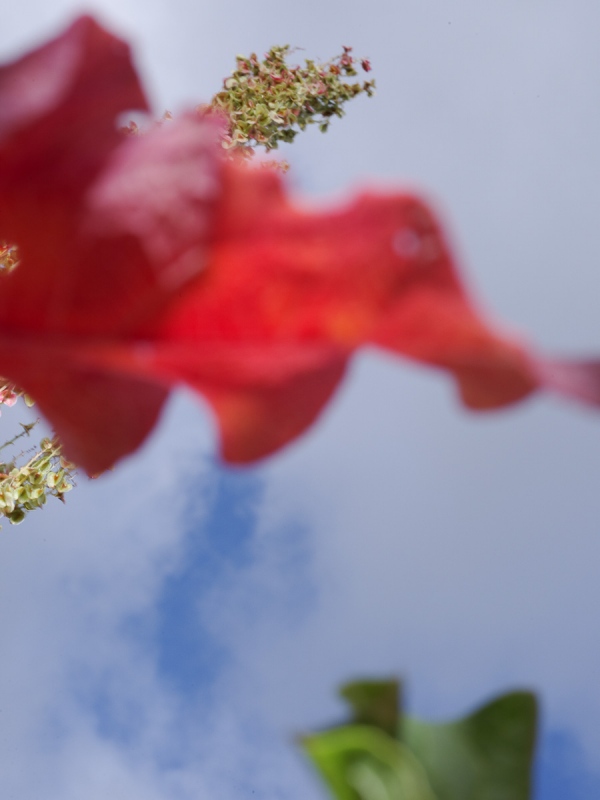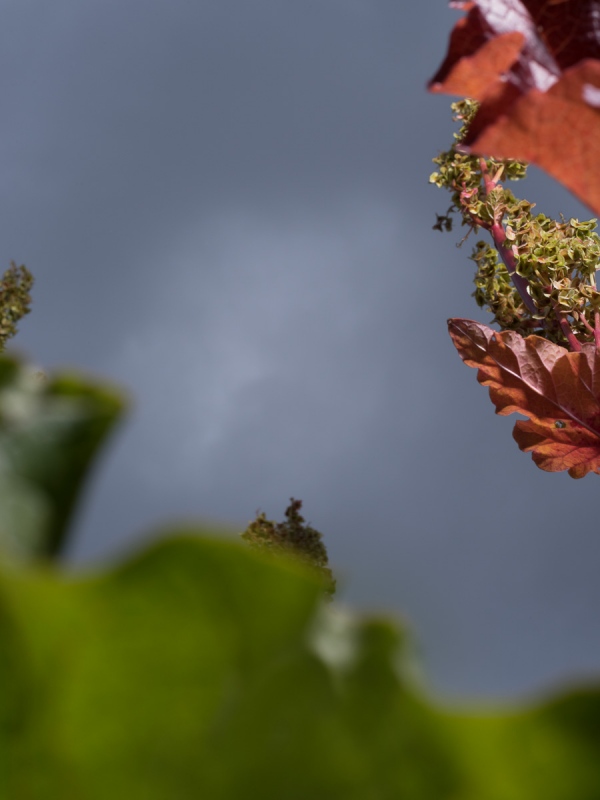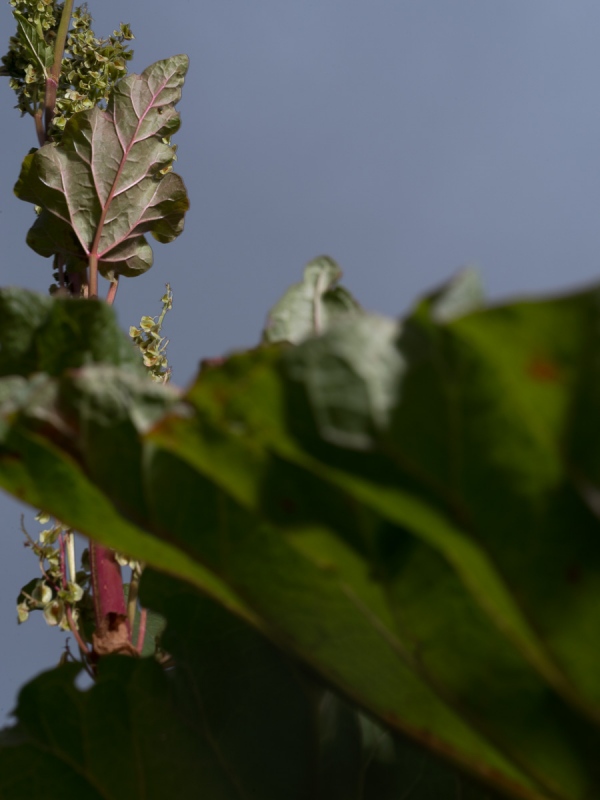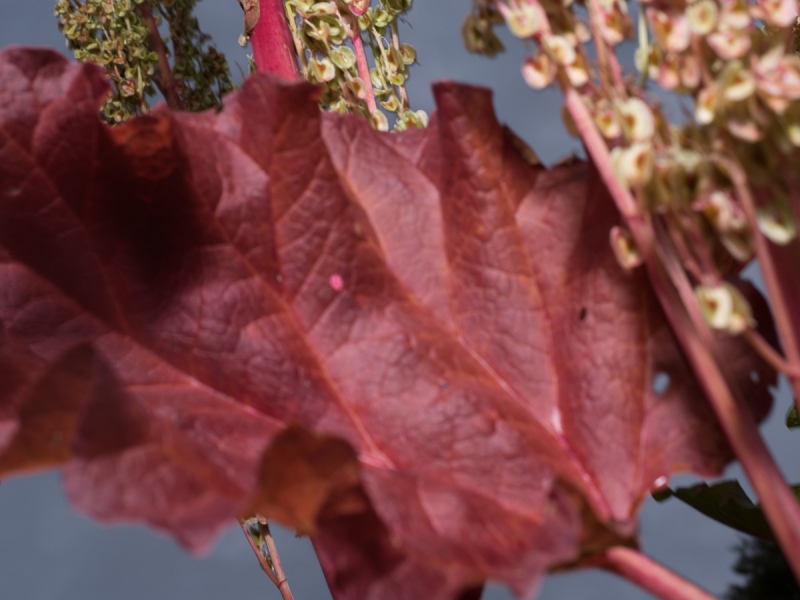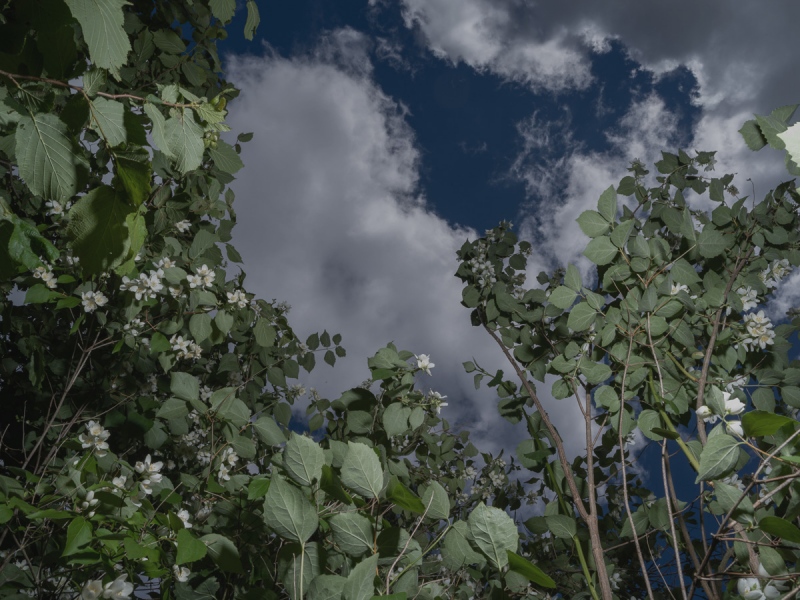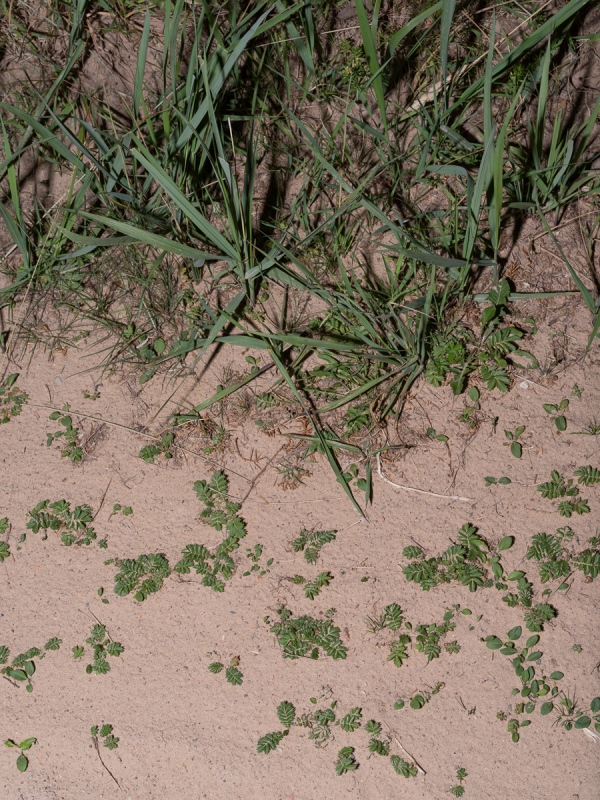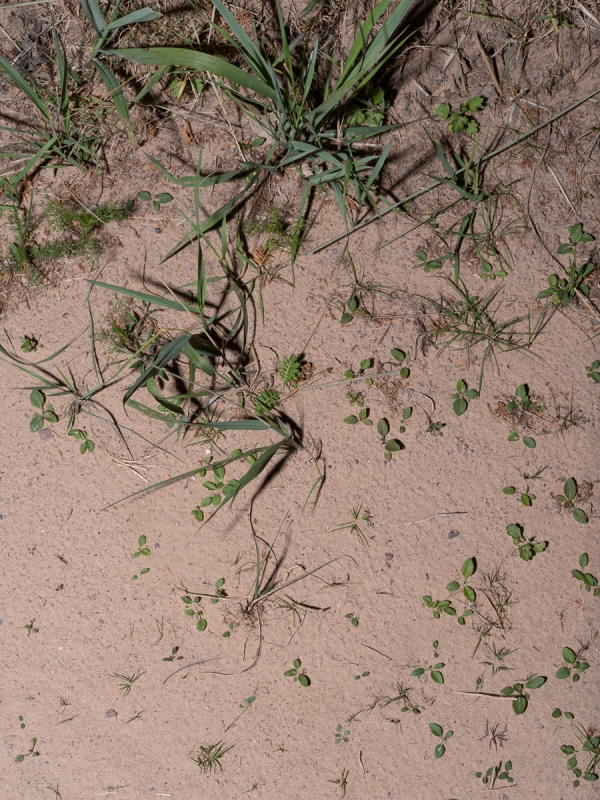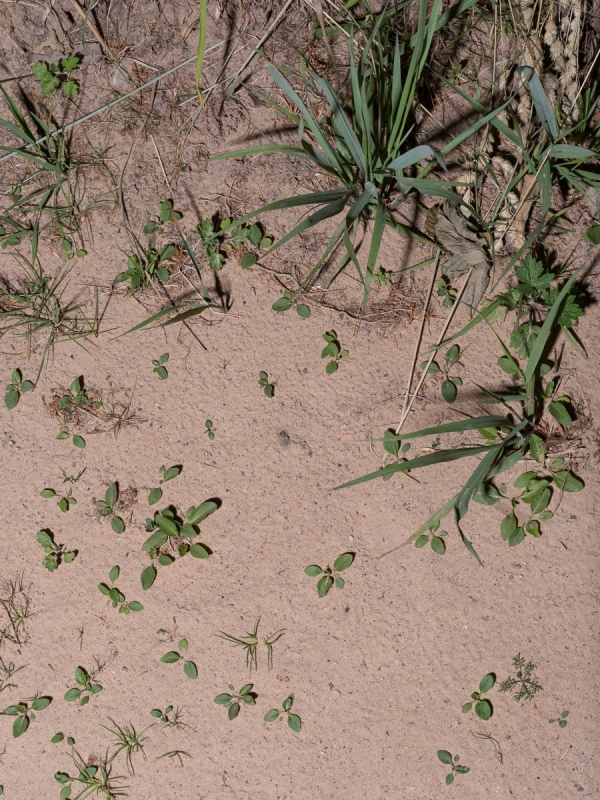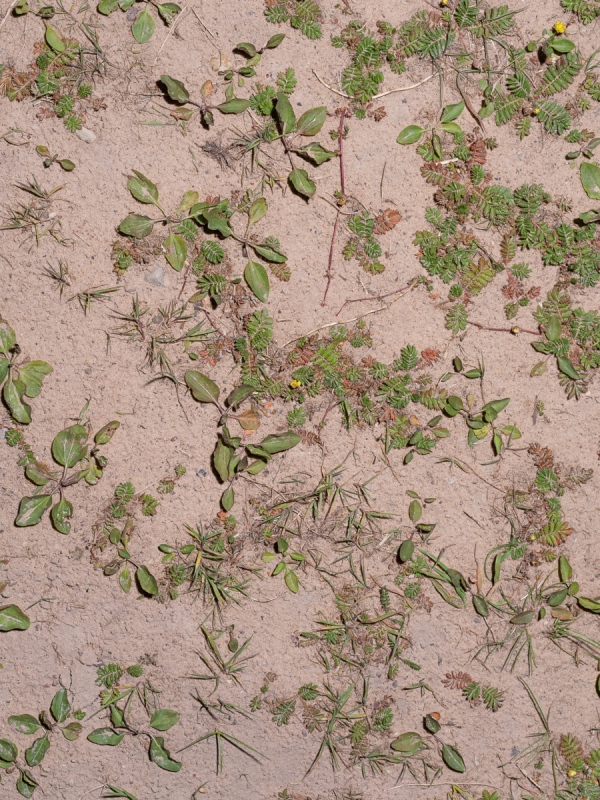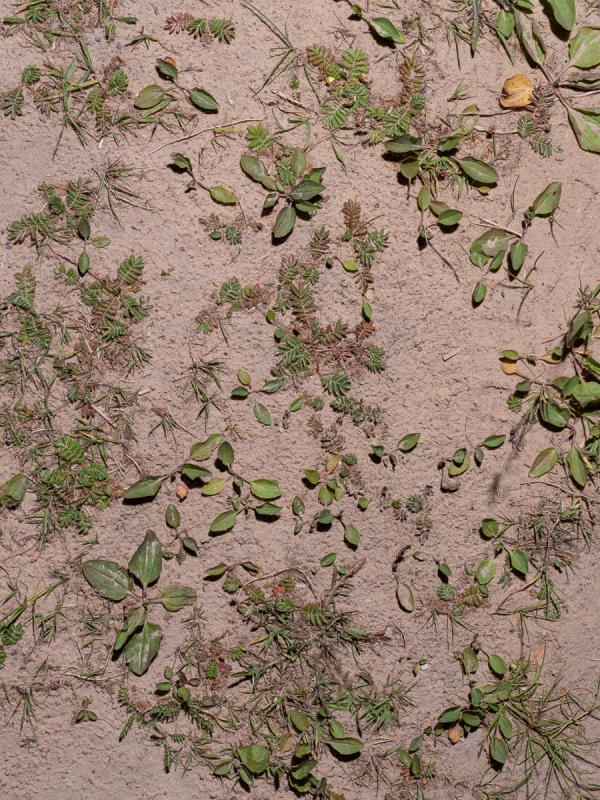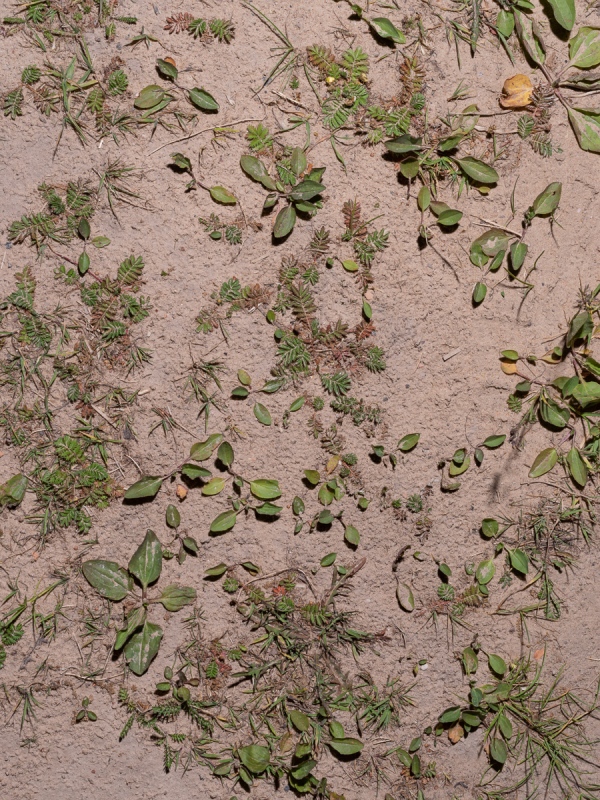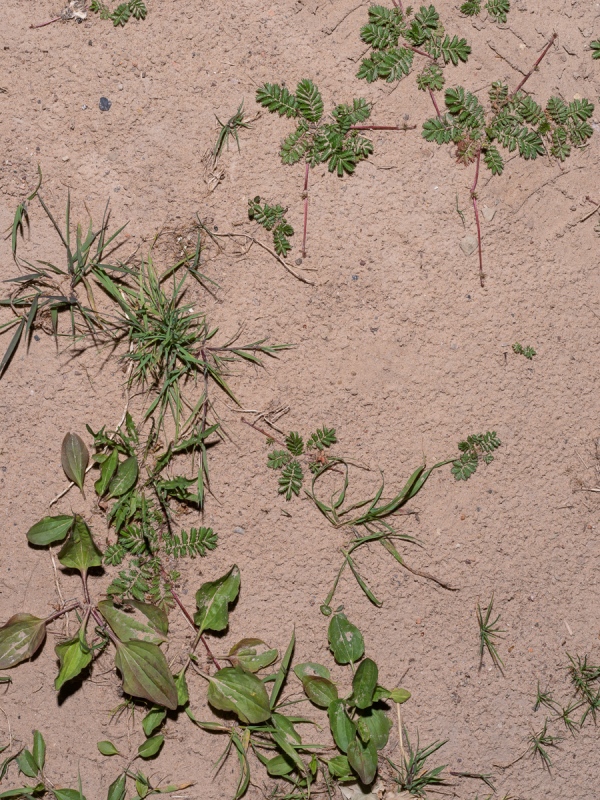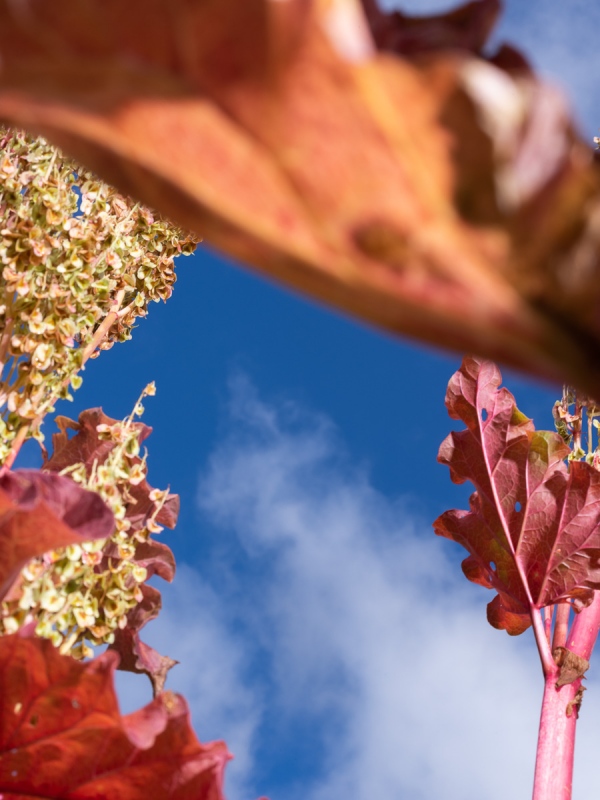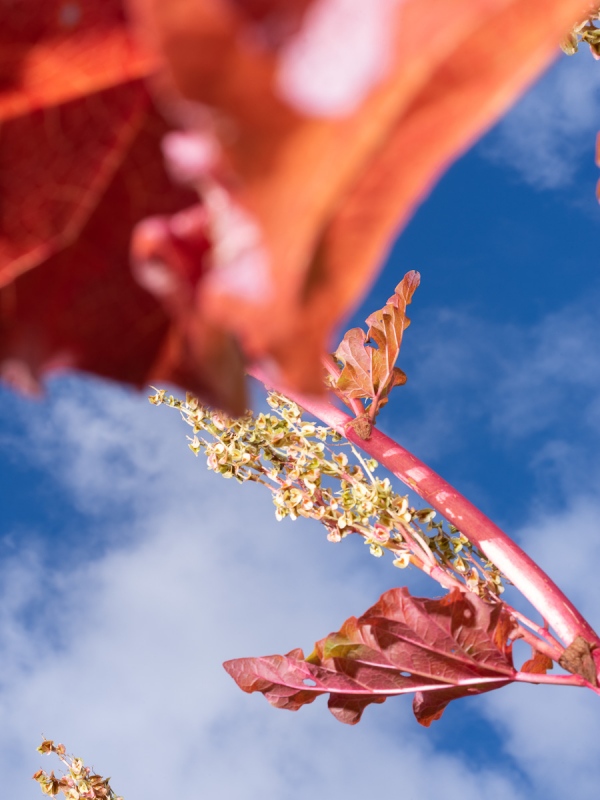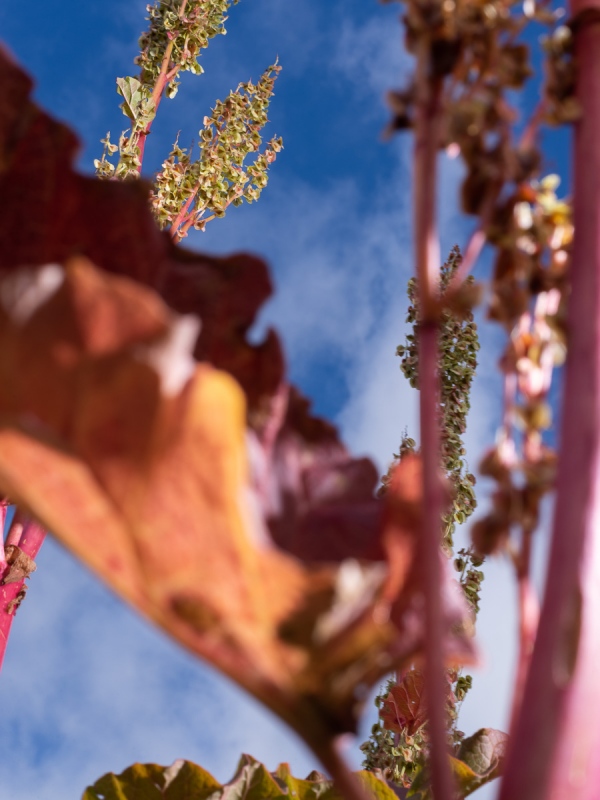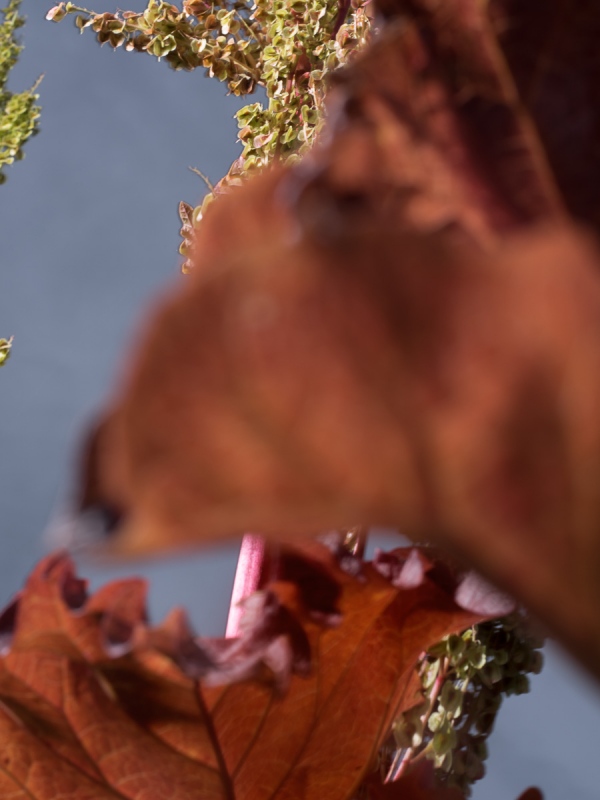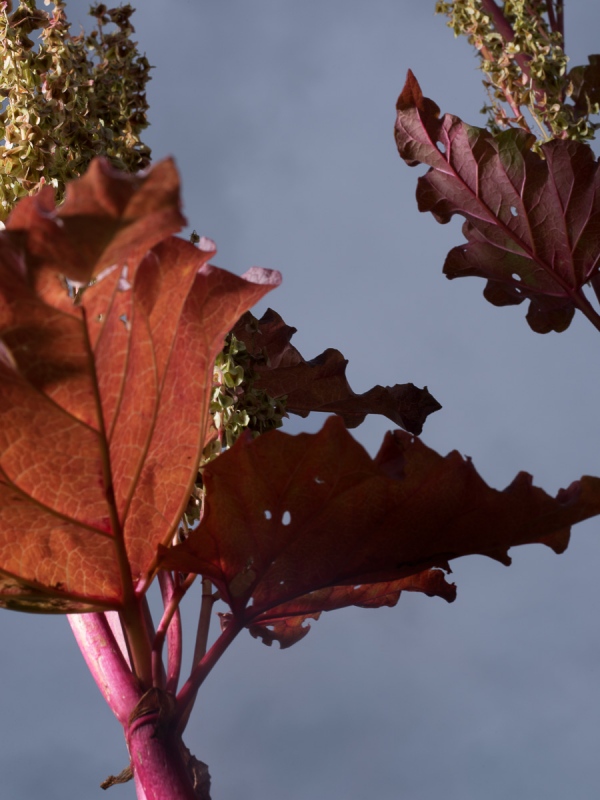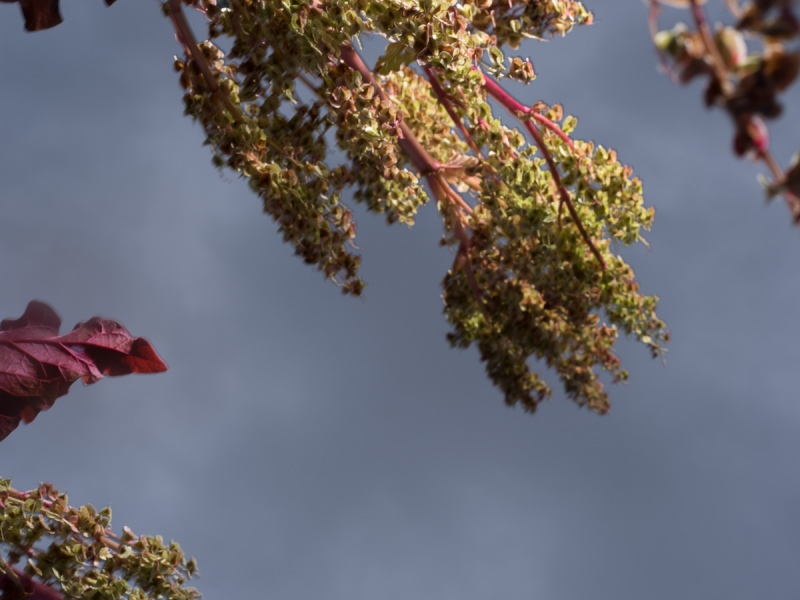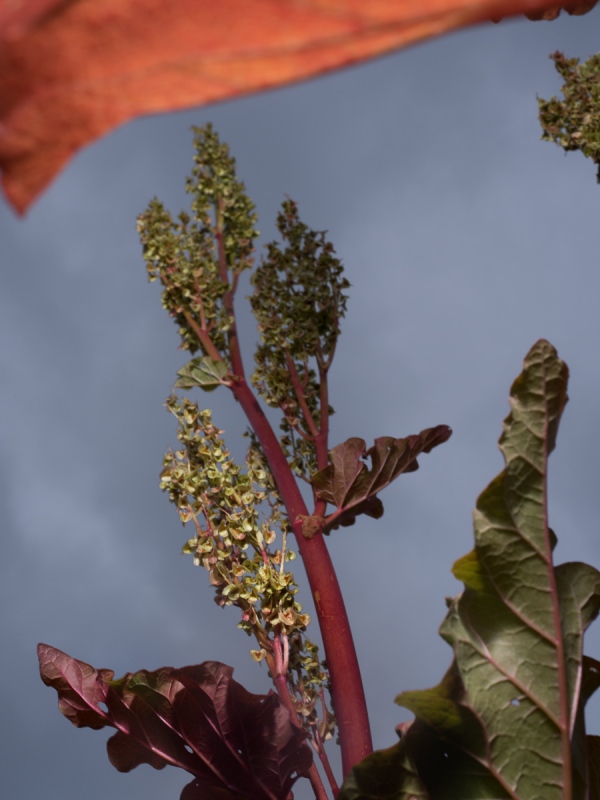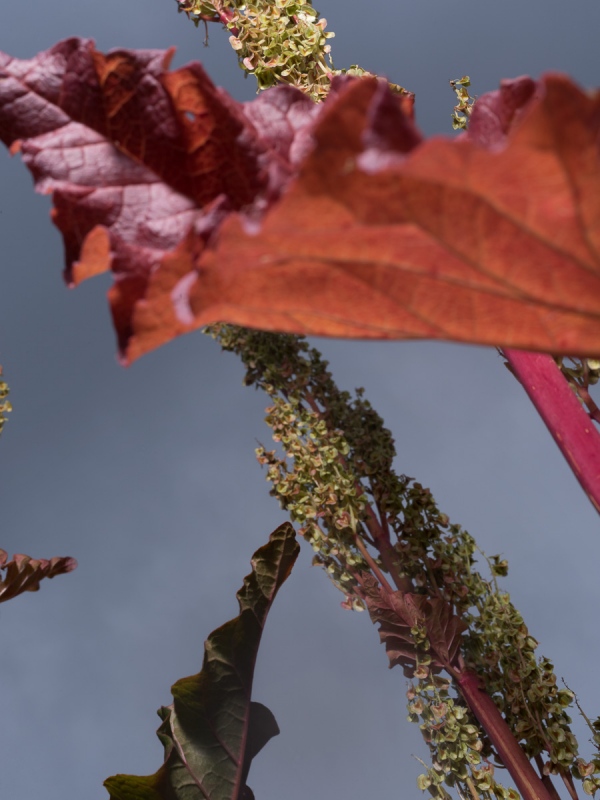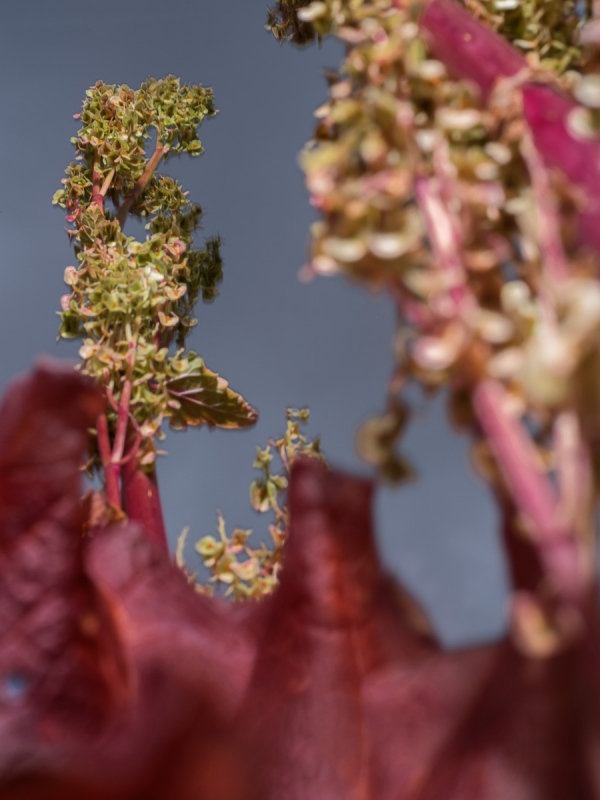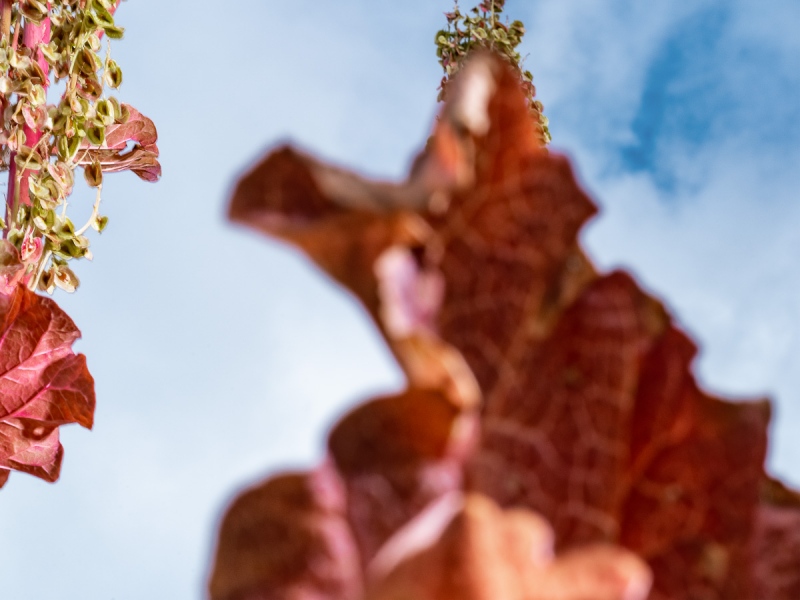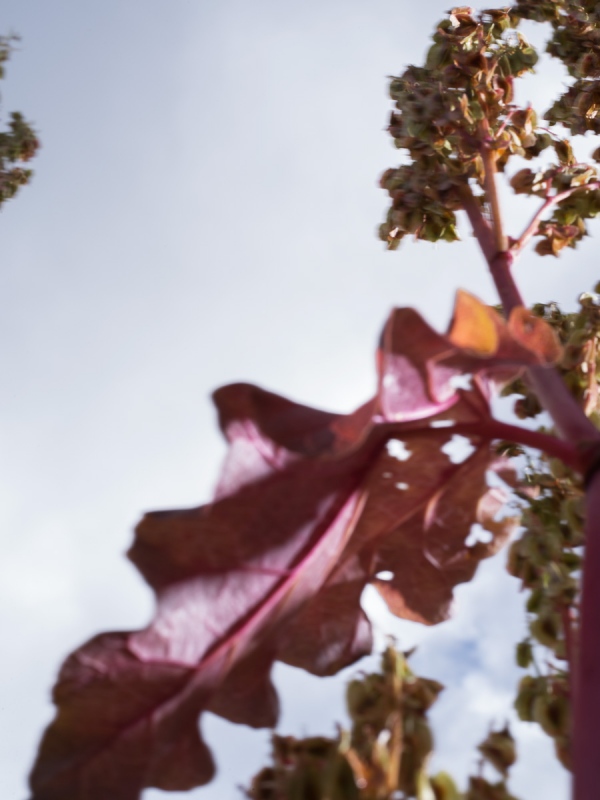-
-
“Of the arts, photography is the most mendacious. Therefore, always keep in mind and photograph only the abstraction that is the beginning and also the end of everything.”
Unknown author
1. That which you see in some of Jānis Deinats’ photographs is not overgrown rhubarb. If anyone loudly proclaims this, then he will turn into such (rhubarb). And will be dead and finished on the spot.
That which you see are the forms of extinct prehistoric dinosaurs. But perhaps they are extra-terrestrial life forms. Incongruous (–us). Remnants of reptilian skin, the holed edges of their armour, the latticework of vertical and sloping tendons, and the protruding reproductive organs of alien life.
However, the areas of acuity created by the photographic lens are only a clumsy attempt to espy clarity (or some kind of enduring truth) in these nightmarish forms, which literally emerge from all sides and rise up like immense monuments. The lens has got too close to the mysterious to understand and define (resolve) it. The principle (mind) of acuity turns out to be too mechanical to grasp all the meanings and function encoded within autonomous and organically unfamiliar life forms. Everything is decentred, abstract, tragically beautiful and mystical.
2. In other photographs by Jānis Deinats, there is also no room for jokes. There are photographic excavations of trivial, even narratively, anecdotal reality, in mysterious evidence is “dug up “of the existence of another world parallel (and significant) to us. Once again, incongruous (-us). If you want, this evidence can be called numerology, or a mystical revelation or formal abstraction. They are akin to recorded moments that last forever, which suddenly reveal the invisible links between surrounding things or situations and their fragile but vital significance. They seem so simple, occasionally even too beautiful and at the same time abstractly remote. Like ominous hints without specific indications.
3. As a photographer, Jānis Deinats espies big existential stories in the world. Even in details, which may initially seem insignificant. These stories cannot be incorporated into words – they hide within the internal visual rhythms, proportions and relationships, as well as in the accidental nature of photographic works. Deinats works on the boundary between reality and abstraction, but the latter definitely takes the upper hand. The abstract “– us” never appear real, but are always present as a constant given.
Ivars Runkovskis (=)
All the world’s visible details, although they may initially seem insignificant, conceal big existential stories. These stories cannot be incorporated into words – they hide within internal visual rhythms, proportions and relationships, as well as in the accidental nature of recording. It is on the boundary between reality and abstraction, where abstraction definitely takes the upper hand, because only it alludes to the world as a whole and its reproducibility. They are akin to recorded moments that last forever, which suddenly reveal the invisible links between surrounding things or situations and their fragile but vital significance. Reminiscent of visual hints without specific references; they are paradoxical and thus true.
-
-
-
